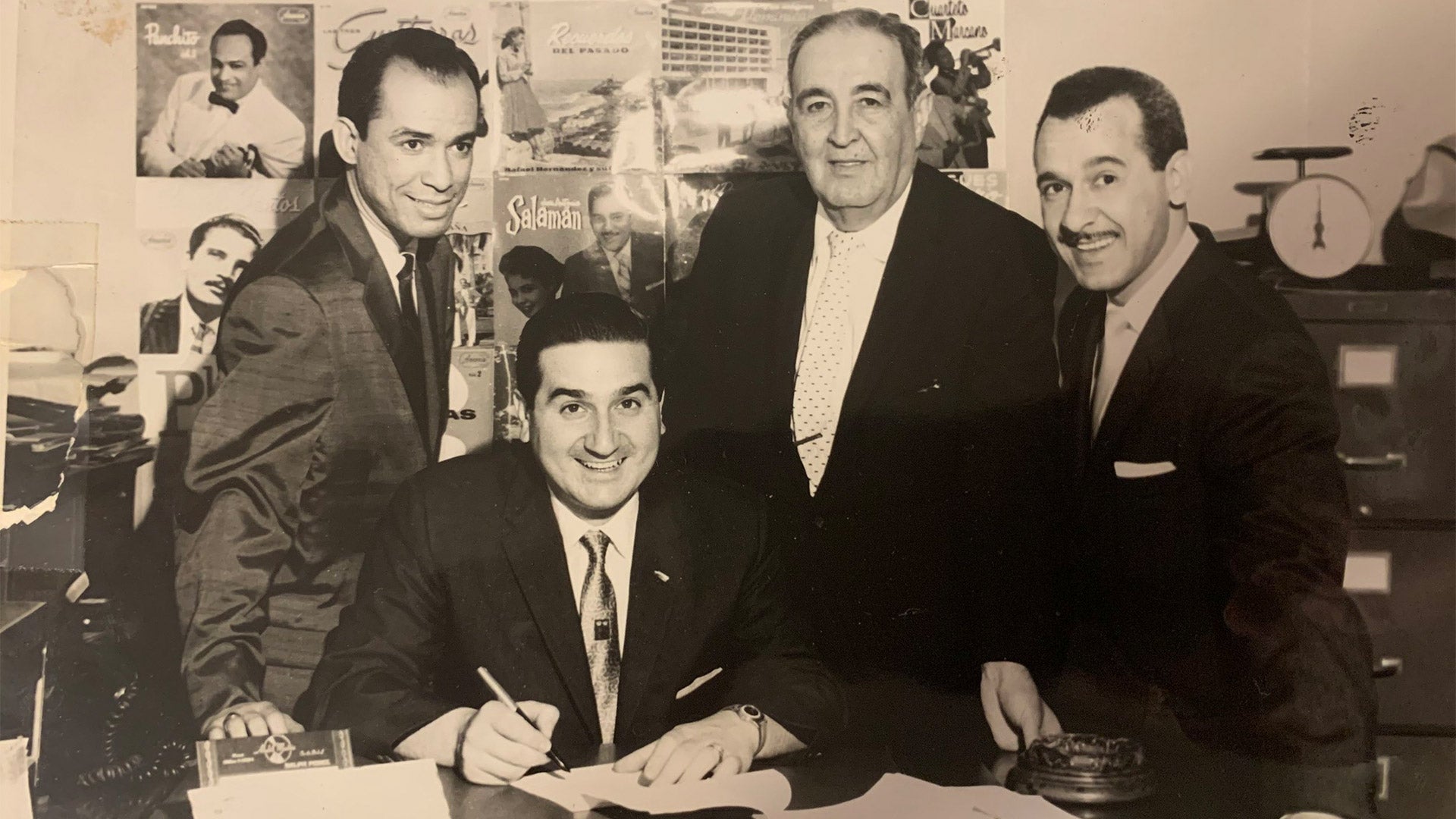
November 16, 2023
From left to right: Dominican composer Mario de Jesús Báez; unidentified; Ralph Pérez, unidentified; at Ansonia Records office, 992 Columbus Ave, NY, 1950s.
In the 1940s, Rafael ‘Ralph’ Pérez was an A&R rep for the Latin American division of Decca Records in New York. As a proud Puerto Rican, he wanted to champion the authentic Latin music that mainstream American labels largely ignored. He saw the need to address this lack of music in a market he felt was underserved, so he founded Ansonia Records in 1949, naming it after a popular hotel on the Upper West Side of Manhattan where the company often housed visiting recording artists.
Some of the first Ansonia sides were Dominican merengues. Pérez put together what became the most popular group in that genre outside of the Dominican Republic in the 1950s: Ángel Viloria y su Conjunto Típico Cibaeño. From this initial success, Pérez and Ansonia would continue to release music made for Puerto Rican, Cuban, and Dominican immigrants in the Spanish-speaking New York communities of El Barrio (Spanish Harlem), The Bronx and Brooklyn, as well as for listeners in the Caribbean and throughout Latin America. During the 1950s and 60s, the Ansonia catalog grew to contain a long list of artists from Puerto Rico, Cuba, the Dominican Republic and other countries including Haiti and Spain.
Music Legacy of Ralph Pérez & Ansonia Records. LatinX Project, NYU.
Many sessions took place at Beltone Recording Studios in midtown Manhattan where Ansonia spent sixty dollars an hour to record. Pérez made sure the artists had thoroughly rehearsed before entering the studio and he carefully supervised each session. According to industry lore and accounts of shared admiration between him and his artists, Pérez earned a solid reputation as one of a handful of professionals in the recording industry who could be trusted to pay musicians for their labor immediately following their session. He also used recording studios in San Juan, Havana and Mexico City to build the Ansonia catalog. By the late 1950s Ansonia was positioned as worthy competition to other popular Latin New York labels of the time like Tico, SMC, Seeco and Alegre.
For a small, independent family-run record label, Ansonia was home to a surprisingly large, diverse and important catalog of seminal recordings featuring traditional and popular Latin rhythms and sounds. Genres such as música jíbara, plena, bomba, danza, son, guajira, bolero, danzón and merengue are well represented, as are guaracha, mambo, cha-cha-cha, pachanga and boogaloo.
After the death of Ralph Pérez in 1969, his daughter Mercedes and her husband Herman Glass became managers of Ansonia. In 1985 Ansonia moved to new facilities in New Jersey. Herman Glass skillfully maintained Ansonia’s commitment to quality, producing records in New York and overseas until his passing in 1986, at which time Mrs. Pérez-Glass and their son Henry Gerard Glass assumed responsibilities. Ansonia’s last recording of new material was in 1990.



